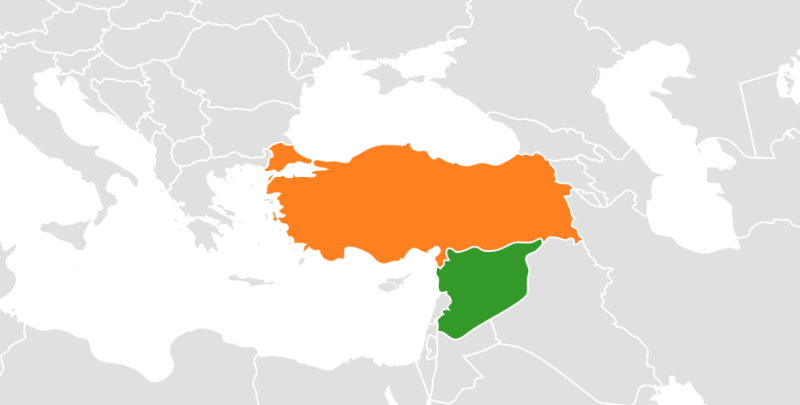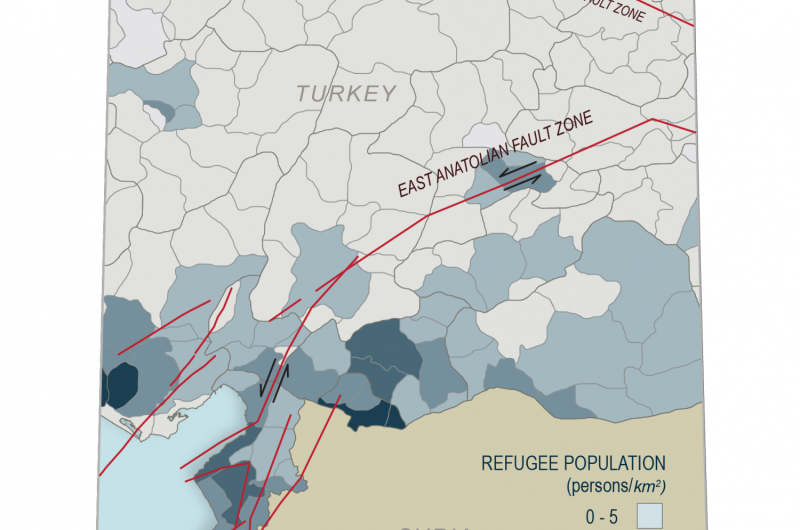Syrian refugees face new obstacle: Turkish earthquakes

Syrian refugees seeking reprieve from civil war may have traded a violent home for a different danger: deadly earthquakes, according to new research presented here today.
More than 2.5 million Syrian refugees who fled to Turkey in the past five years now live in seismically active regions, many with histories of powerful tremors. Yet their presence is not reflected in the data traditionally used to produce risk assessments, which scientists and agencies use to mitigate and respond to natural hazards, according to Bradley Wilson, a geoscientist at the University of Arkansas in Fayetteville, Arkansas.
Including Syrian refugees in Turkey's earthquake risk assessments could boost the death toll from a major earthquake in the country's most populated districts along the Syria-Turkey border by up to 20 percent, potentially causing hundreds or thousands more casualties than currently projected, according to Wilson's new research.
The research highlights the importance of including physical, political, cultural and socio-economic factors in natural hazard risk assessments, Wilson said.
"It is vital to remember that Syrian refugees migrating northwest into Turkey are migrating to areas constructed on the ruins of cities that have been repeatedly destroyed in large earthquakes," said Wilson, who will present the results of his research today at the 2016 American Geophysical Union Fall Meeting.

Turkey lies atop several active fault zones, which have produced some of the world's deadliest earthquakes. The 7.8-magnitude Erzincan earthquake struck northeastern Turkey in 1939, claiming nearly 33,000 lives and demolishing the city of Erzincan. More than 600 years earlier, an earthquake estimated to be of magnitude 7.0 struck the area known today as the Adana province, killing roughly 60,000.
Wilson's study area spanned regions surrounding the Turkey-Syria border, where both seismic activity and refugee numbers are high. Using a combination of population and refugee data, Wilson compared the regions' populations before and after the Arab Spring in 2011 to depict how refugee migration affected the country's earthquake-prone districts. Using Turkey's seismic records, he then simulated multiple earthquake scenarios and forecasted casualty tolls under magnitude 5.8, 6.4 and 7.0 earthquakes.
Incorporating refugees into Turkey's earthquake risk assessments significantly shifted the study area's high-risk zones. Before refugee migration, most at-risk areas were near the country's center. While those areas remain high-risk, including refugees shifts the most at-risk regions to the south, where most refugees now live.
Under worst case scenarios, where a magnitude 7.0 earthquake strikes Turkey's most populated districts, the study suggests the death toll could rise by 20 percent over current estimates. Deaths could rise by at least 3 percent if a magnitude 5.8 earthquake were to strike in a less populated district, according to the new research.
"If ignored, these discrepancies ultimately complicate the work of the scientists and agencies who work to mitigate and respond to earthquake disasters," Wilson said.
More information: Poster Title: Fleeing to Fault Zones: Incorporating Syrian Refugees into Earthquake Risk Analysis along the East Anatolian and Dead Sea Rift Fault Zones, agu.confex.com/agu/fm16/meetin … app.cgi/Paper/131476
Provided by American Geophysical Union
















